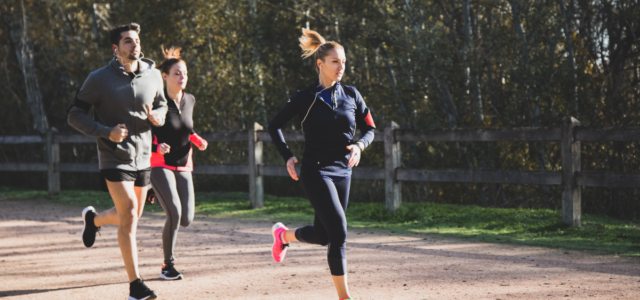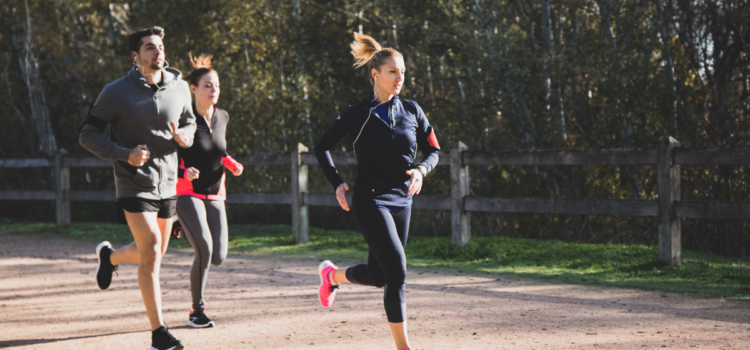

Top 10 Training Running Tips for Spring Success
NewsNewsTickerProduct Reviews/Top Ten Lists/Resources/TipsRunningXC-Track-Running February 10, 2025 Lauren Keating 0

It’s time to shake off that winter chill and mentally leap forward to strategizing for running goals this spring. Spring training presents an exciting opportunity for runners to showcase their speed, endurance, and dedication to the sport when racing this upcoming season. Whether they’re competing on a track team, planning for a 5K, a track event, or a cross-country meet, proper training is essential to ensure peak performance and injury prevention.
Start off the spring season on the right foot with these top 10 training tips to help athletes prepare for achieving their running goals.
1. Set Realistic Goals
Every runner should have a clear goal in mind before beginning training. While having a large overall goal for the season is essential, it’s smart to also set smaller goals that lead the athlete down the path to accomplishing what they are setting out for.
Whether it’s finishing a race without stopping, setting a personal best, or placing in a competition, setting realistic and achievable objectives keeps motivation high and provides a structured training focus.
2. Follow a Structured Training Plan
Runners can’t have a successful spring season without putting in proper training. A well-balanced training schedule is key to improving running performance. Log the miles to build endurance. A good plan should include a mix of endurance runs, speed workouts, hill training, and rest days. Gradually increasing mileage and intensity will help prevent overuse injuries and improve overall fitness.
Those looking to race competitively should consider joining a track or cross-country team where coaches will tailor workouts based on the athlete’s goals.
3. Incorporate Strength Training
Strength training is essential for developing muscular endurance and preventing injuries. And even youth athletes can benefit from strength training. There is no need to sign up for a gym membership or lift weights if not available to them. Bodyweight exercises such as squats, lunges, planks, and push-ups can help build core strength and stability. Strong muscles support better running mechanics and reduce strain on joints.
4. Prioritize Proper Warm-Ups and Cool-Downs
Dynamic warm-ups before running help prepare muscles and joints for movement, reducing the risk of strains. Runners should always properly warm up before jumping into their workout.
Exercises like leg swings, high knees, and butt kicks get the blood flowing. After training, cool-down stretches aid in recovery and flexibility, helping to prevent stiffness and injuries.
5. Focus on Proper Running Form
Maintaining good running form is crucial for efficiency and injury prevention. Runners should focus on keeping their posture upright, arms relaxed, and strides even. Shorter, quicker steps are often more effective than long, inefficient strides that can lead to fatigue. Lead with the hips, pump the arms, and focus on breathing.
6. Stay Hydrated and Eat a Balanced Diet
To set an athlete up for success, runners need to also focus on diet and drinking enough water so that their bodies are fueled and ready to perform.
A balanced diet of carbohydrates, protein, and healthy fats fuels training sessions and promotes recovery.
Drinking enough water throughout the day and replenishing electrolytes after workouts is key.
7. Get Enough Rest and Recovery
Rest is just as important as training. Young runners should get at least 8-10 hours of sleep per night to allow their bodies to recover and grow and for muscle recovery. Incorporating rest days into training schedules helps prevent burnout and reduces the risk of injuries caused by overtraining.
8. Incorporate Cross-Training
Engaging in other activities like swimming, cycling, or yoga can improve overall fitness while giving running muscles a break. Cross-training helps build endurance, flexibility, and strength without the repetitive impact of running. Find an enjoyable physical activity and use days when the team isn’t practicing to dedicate to cross-training.
9. Practice Race-Day Strategies
The only way to get better at spring races is to race. Hit the course or track and practice pacing strategies, hydration routines, and warm-up techniques to ensure they are prepared for race day.
Simulating race conditions during training helps young runners build confidence. Running in different weather conditions can also help them adapt to various environments.
10. Stay Positive and Have Fun
Maintaining a positive mindset is crucial for long-term success in running. Youth runners should enjoy training, celebrate progress, and learn from setbacks. Encouragement from coaches, parents, and peers helps build confidence and keeps the sport enjoyable. Remember how big or small a setback is that can be an opportunity to learn grow and develop the mental resilience needed to have a successful spring race season.
By following these training tips, young athletes can maximize their performance and enjoy their spring races. With dedication, consistency, and a well-rounded approach, they’ll be ready to achieve their running goals while staying healthy and having fun this spring.









No comments so far.
Be first to leave comment below.